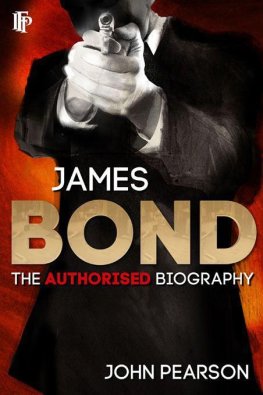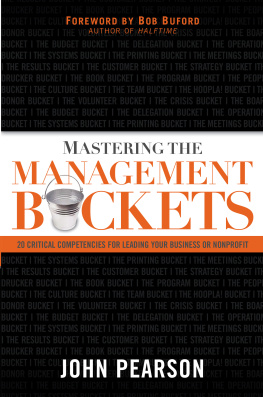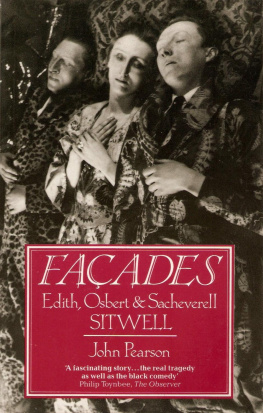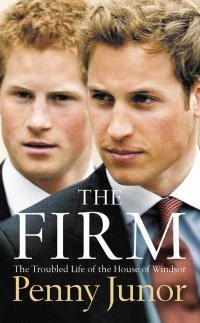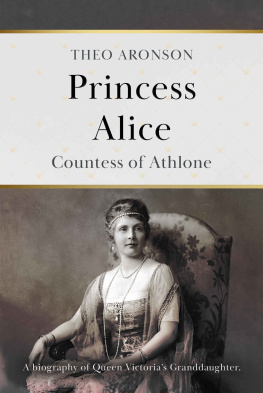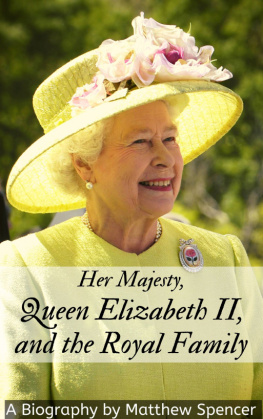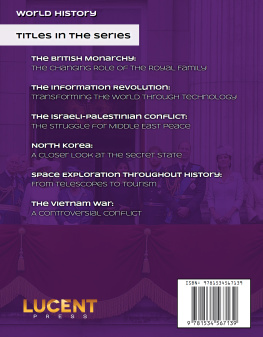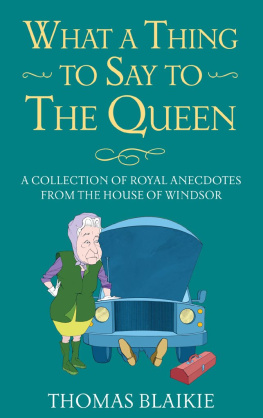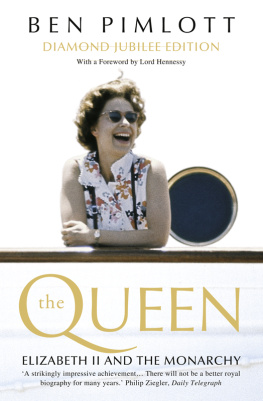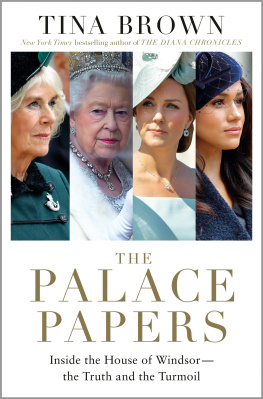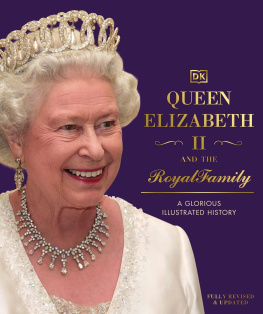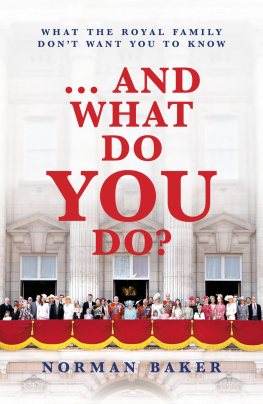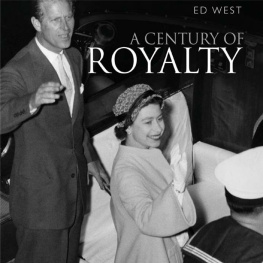1
Daylight Upon Magic
The royal scene is simply a presentation of ourselves behaving well. If anyone is being honoured, it is the human race.
Rebecca West
On July 29, 1981, on Americas west coast, television went on the air at 4.30 A.M. and soon an estimated 38.8 million US households were switching on their sets to watch a wedding in the heart of London which, during the following five hours, would be simultaneously viewed by something like an eighth of the population of the world.
In London the day had been declared a public holiday. At Knightsbridge Barracks, reveille sounded for the Household Cavalry at 4.45, and on the pavement of the Mall near Buckingham Palace Mrs Avril Harrison and her daughter, Rosemary, were finishing the third night of their vigil in the open air to guarantee their view of the procession. For richer visitors to London, room service at the Dorchester Hotel was serving free champagne with breakfast for those who could face it; and the underwriters at Lloyds of London would soon congratulate themselves at not needing to pay out twelve million pounds to those makers of commemorative pottery who had insured themselves in case the whole event was cancelled.
In order to be present, Mrs Nancy Reagan together with five hatboxes and twelve personal security men had left the President of the United States for the longest period since their marriage twenty-nine years before. As his representative at the actual wedding in St Pauls Cathedral, she would be among the sovereigns of Norway, Sweden and the Netherlands, the Presidents of Germany and France, and Princess Grace of Monaco. There would also be the twenty-eight-stone King of Tonga, who had thought it wise to bring his own specially reinforced chair; but the King of Spain had not turned up because his government was currently disputing Britains ownership of Gibraltar. To show there was nothing personal in his absence, he had, however, sent a present.
Over a thousand other presents had also reached the Palace from around the world, including a microwave oven from Toshiba, a painting by Raoul Dufy from the President of France, and a large dog basket from the Marquis of Zetland.
During the night the London sewers had been searched by men from Scotland Yard for IRA terrorists, and, to be on the safe side, armed policemen dressed as footmen would be riding on the royal carriages. Extra surgeons and supplies of plasma were in readiness throughout the day at nearby hospitals.
The Pope, recovering from an assassination bid himself, had sent a special blessing from his bed in Rome. His representative, Cardinal Basil Hume, would be the first Roman Catholic prelate present at a royal wedding since the Reformation the prospect of which had brought a rousing outburst from the Northern Ireland Protestant, the Reverend Ian Paisley:
May God bless the Prince of Wales and his bride to be, but may God deliver the House of Windsor from the conspiracy of Rome to subvert the Protestant monarchy.
Soviet television was virtually unique in not showing any of the days proceedings, having condescended to inform its viewers the night before that London hopes the wedding bells will drown out the sound of the shooting in Ireland. But apart from Moscow and the Reverend Ian Paisley (and a divorce from Shropshire who saw fit to hang himself because the bride reminded him so strongly of his former wife), the marriage of Charles Philip Arthur George Mountbatten-Windsor, Prince of Wales, to Lady Diana Frances Spencer was regarded by a troubled world as the most engrossing celebration ever shared on such a scale in history.
One effect of this village wedding in the presence of millions through TV, as the Dean of St Pauls somewhat curiously described it, was to endow the twenty-year-old bride with a mythical status all her own. Her televised marriage was like the greatest movie premiere in history, and her closest rivals were the screen stars whom she outshone for glamour and mystique; so that today, as the still shy and stringently protected mother of two small children, she has become the owner of the worlds most instantly recognizable female face, with worldwide surveys showing her to be more famous, more admired and envied than any other woman in the world.
But Diana is not the only member of the British royal family to be established in the role of worldwide megastar by now. In February 1983, her parents-in-law, the Queen of England and Prince Philip, Duke of Edinburgh, arrived at Los Angeles to be greeted by the Reagans at the start of an official visit to the USA. Her Majesty had casually and tactfully expressed a wish for her host to show her something of the scenes of his youthful triumphs, with the result that the high spot of the brief royal stay in California was the presidential evening spent in Hollywood itself.
The President and his First Lady personally arranged a party for the Queen to meet the stars in one of the last remaining old-time studios stage 9 at Twentieth Century-Fox, where shooting had just finished on the last episode of Mash. Banks of plastic flowers, fairy-lights and a 24-foot high fountain which had featured in Hullo Dolly! were hurriedly installed to make the royal couple feel at home, and five hundred of the most famous and acceptable names in Hollywood flocked to meet the Queen of England and her husband.
Roy Rogers, Fred Astaire, Gene Kelly, Lucille Ball, Bette Davis and Loretta Young, arrived together with James Mason, Julie Andrews, Dudley Moore, and Fred McMurray at the head of a glittering contingent of the brightest, best and richest Hollywood could muster. Together with Her Majesty they dutifully munched a sit-down dinner of the Presidents own favourite chicken-pot pie, followed by Snowballs ice-cream rolled in toasted coconut and dunked in chocolate sauce. Then just as dutifully the stars applauded the Presidents favourite comedian, George Burns, and an extemporary pop-song medley from his favourite vocal duo, Perry Como and Frank Sinatra.
History does not record what Elizabeth of England truly thought of the chicken-pot pie and the pop-song medley let alone George Burnss jokes. Hers is a reserved public presence at the best of times, which reveals its full potential for enthusiasm only when one of her horses looks like winning at the races. But unlike her sister, Princess Margaret, who eighteen years before had left a more informal Hollywood party almost as dawn was breaking, the Queen and her husband did not linger, and the royal Rolls, with standard flying, made its regal exit through the famous gates of Twentieth Century-Fox long before midnight struck.
It had been a most unlikely evening, but in its own uncomfortable way it had also been a professional tribute of a sort from the reigning stars of Hollywood to a star whose reign was so much more impressive than their own. Something of this had been clearly evident the previous June, during an official visit by the Reagans as part of the important presidential tour of the leading NATO allies. By the time Americas first citizen and his lady reached London, they had already met the Pope and a group of European presidents and prime ministers, and had maintained themselves as considerably more than the equals of their European hosts. No less was to be expected of a president who is one of the greatest self-projectors of our times, and the elected head of the richest nation in the world.
But when they arrived as guests of Her Majesty at Windsor Castle, the Reagans seemed to change. The presidential magic was no match for the magic of the monarchy, and suddenly the Reagans seemed not merely powerfully impressed, but rather unimpressive. When Queen and President accomplished horseback riders both took a morning ride in Windsor Park for the benefit of the television cameras, the worlds most famous former movie star was firmly in a supporting role to his rather ordinary-looking fellow rider.


